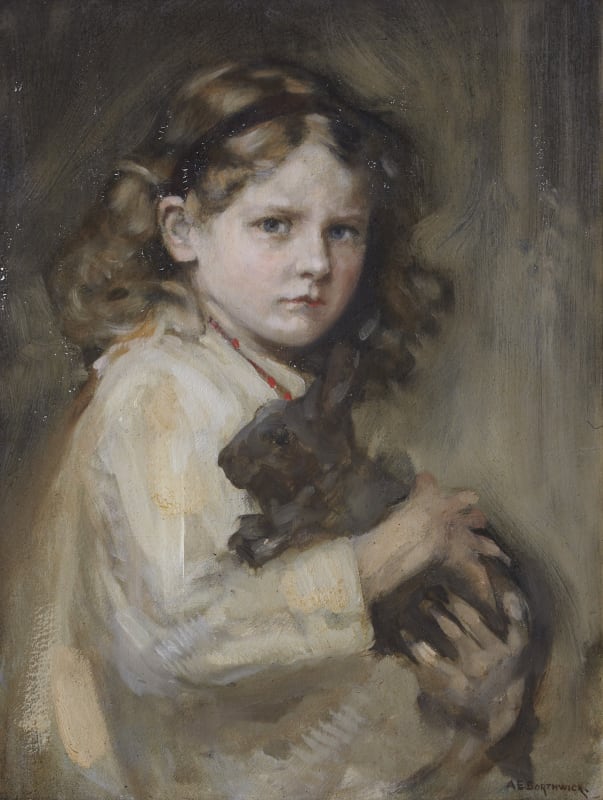Elected ARSA: 21 March 1928
Elected RSA: 9 February 1938
With the death of Alfred Edward Borthwick on 7th December 1955,
the Academy has lost one of the best known of its older Members.
Throughout a long and active life, his work was familiar to a wide
public; indeed, few painters of his time achieved such a popular
success as he did with his picture “‘ The Presence,” painted in 1909
and now hanging in St. Mary’s Cathedral in Edinburgh. This painting,
which became very widely known, was said to be the most reproduced
picture of its time.
He was, however, best known as a portrait painter and had many
prominent sitters, including the Duke of Windsor as Prince of Wales.
He also carried out a number of figure subjects as well as landscapes,
which were full of feeling and showed a fine sense of handling.
Borthwick, who was born in 1871, studied art in Edinburgh, London,
Antwerp and Paris, where he was a pupil of Bouguereau and Flury.
During the South African War he served with the Scottish Sharpshooters, and from 1902 to 1904 he was honorary secretary of the British Settlement of South Africa, where he worked with Cecil Rhodes and Lord Milner. In the war of 1914-1918 he again saw active service before being recalled to work for the Ministry of Munitions.
Borthwick was President of the Society of Scottish Artists when the constitution was extended to include applied art. He was elected an Associate of the Royal Scottish Academyin 1928 and a full Member in 1938. He was also an Associate of the Royal Society of Painter Etchers, a Fellow of the Royal Society of Arts, and Hon. Fellow of the Fine Arts Trade Guild. Further, he was one of the original Members of the Scottish Modern Arts Association and a Memberof the Council.
While he was President of the Royal Scottish Society of Painters in Water Colours (1931 to 1950) he introduced several schemes to make the work of the Society more widely known. In 1952 he received the honorary degree of LL.D. from St. Andrews University.
Borthwick was a man of distinguished appearance with a courtly manner more reminiscent of the Victorian era than of the present day. He was keenly aware of the dignity of his profession—a profession he loved and to which he devoted his whole life.
RSA Obituary from the 1955 RSA Annual Report

